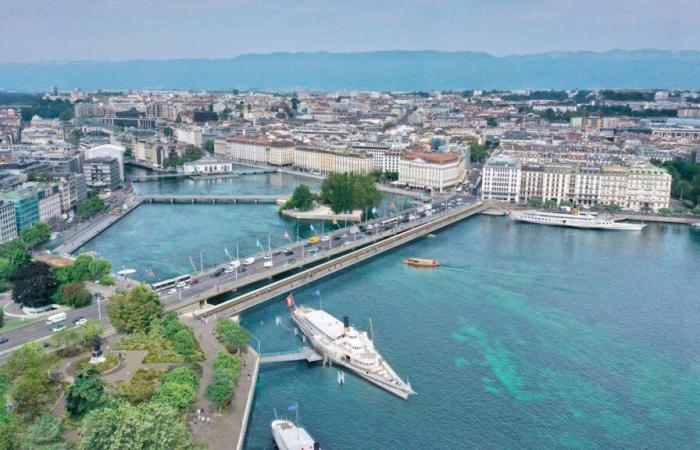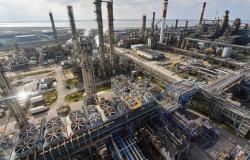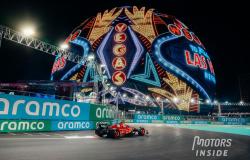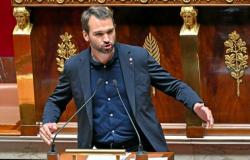For its supporters, it is an essential majestic “walk”. For its opponents, it is a useless and massive second “bridge”. The pedestrian bridge of the Mont-Blanc bridge, whose fate will be in the hands of the voters of the City of Geneva on November 24, is divisive. But the balance of power is unbalanced, given the very broad and unprecedented support that the project arouses. “We are the little David of civil society against the big Goliath of the authorities,” say the detractors of the work.
This bridge indeed appeals to almost all political parties (except the far left and the MCG), but also economic circles and those of mobility, in the broad sense. The object thus brings together, at random, the TCS, Pro Vélo, the Federation of French-speaking companies, the PS and the UDC. It’s rare.
Safer bicycles, protected motorized traffic
For all these stakeholders, the project “responds to a request expressed by the population for more than fifteen years”, namely “the separation of flows” of pedestrians, cyclists and motorists on this congested axis. “We have been campaigning for this for years,” recalls Grégoire Carasso, of the transport and environment association (ATE). He emphasizes that the work dedicated to onlookers also makes it possible to create “a two-way cycle path on the bridge” and this “without impacting motorized mobility”: this does not see any surface subtracted. The thing is not neutral, because “we will never win at the popular level if we ask for the removal” of a lane dedicated to cars on this bridge, admits Roger Deneys, of Pro Vélo.
“An asset for the economy and tourism”
The project therefore delights the TCS, champion of the “intermodal vision”; just like the FER, which also highlights the architectural quality of the footbridge, which its president Ivan Slatkine presents as an asset “for the entire canton, its attractiveness, its economy, tourism and quality of life”. The “walk along the water” thus proposed to the Genevans, says Yves Herren (the Green Liberals), therefore has everyone’s support, and its cost (54 million) seems very reasonable to them compared to the expected benefits.
Alert to the “degradation” of the harbor site
On the contrary, it seems exorbitant to opponents: the heritage circles, CITRAP (community of interests for public transport), the Labor Party and the MCG. For them, the project has many faults. On the one hand, this “bling-bling feat of civil engineering” and its 1,500 tonnes of steel “degrade the harbor which is a protected site”, estimates Leïla El-Wakil, of SOS heritage CEG. “The Mont-Blanc bridge is a historic monument. This footbridge hides it and alters the landscape as designed. agrees Valéry Clavien, of Patrimoine Suisse Geneva.
A preference for widening the bridge
Worse, this addition would not solve anything in terms of mobility. “The bicycles will pile up in front of the flower clock,” estimates Morten Gisselbaek (PdT), where the space will become “impassable and dangerous” for them as well as for pedestrians and tourists, stuck in “chaos”. At a time when the climate plan requires reducing individual motorized traffic by 40% by 2030, it would therefore have been better to “have a real desire to leave room for bicycles” on the Mont-Blanc bridge, to the detriment cars. Or, CITRAP proposes, to widen the bridge on the downstream side. This would make it possible, according to Michel Ducret, to create reserved lanes for public transport, “the development of which must be the priority”, and to allow the tram to pass through them. The thing would cost, he estimates, 40 million. The option is also favored by the MCG.
The fact remains that the opponents, divided as to the best solution, admit that they do not have a plan B, the implementation of which would take years in any case. The yes camp has no more, “because we have never seen such a unifying project,” explains Yves Gerber, of TCS. And to add that a possible plan B, “it would be in fifteen years, and it will be ten times late”.
A wide pedestrian path and a bench
The project submitted to the vote consists of attaching a pedestrian bridge to the Mont-Blanc bridge, on the water jet side. It would offer a 4.8 meter wide path to onlookers, bordered by a huge bench. The current sidewalk, thus freed, would accommodate a two-way cycle path, completing the lakeside U. No traffic lanes would be removed. The cost of the work reaches 54.6 million: 26.2 are borne by the City (and are subject to the vote), 13.1 by the Canton, 5.3 by the Confederation (only if the project sees the day by 2027), and 10 from a patron.






